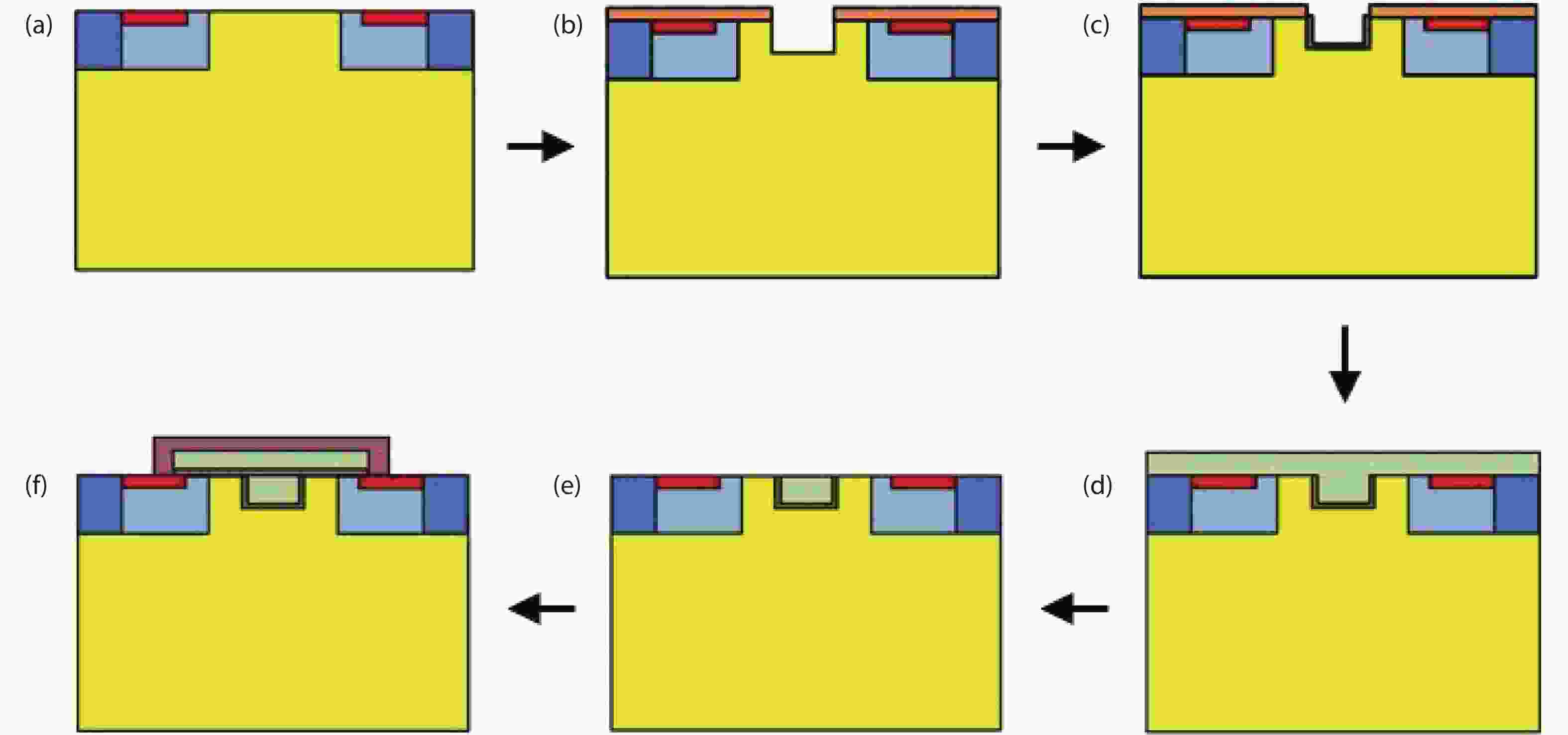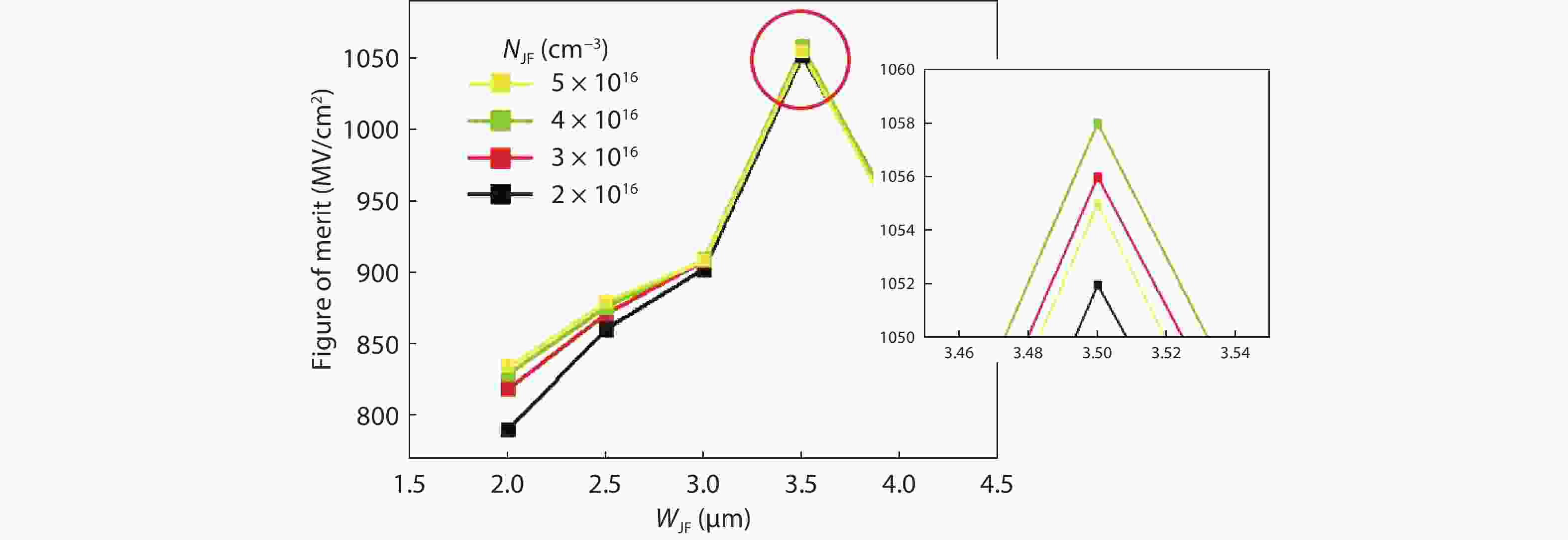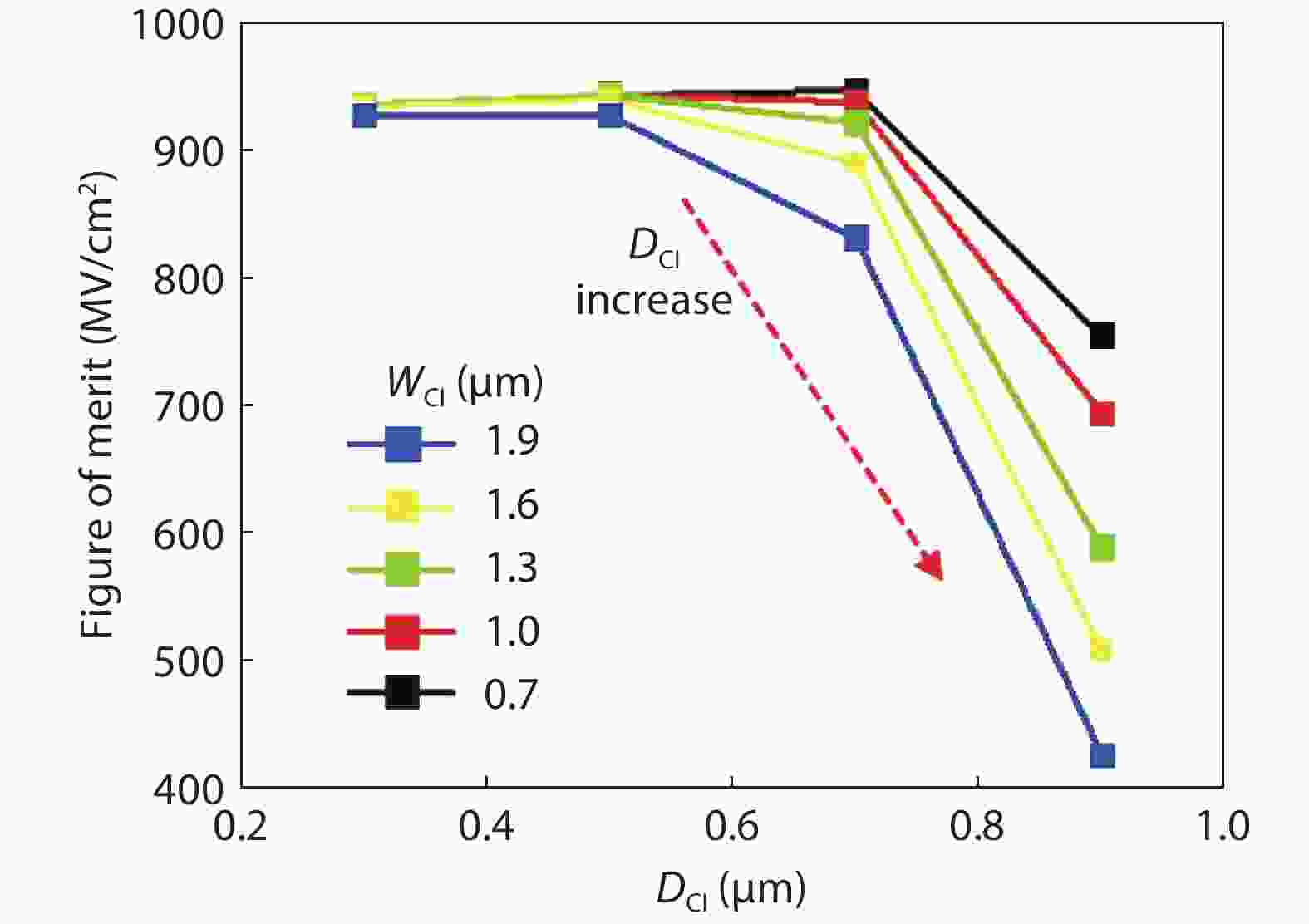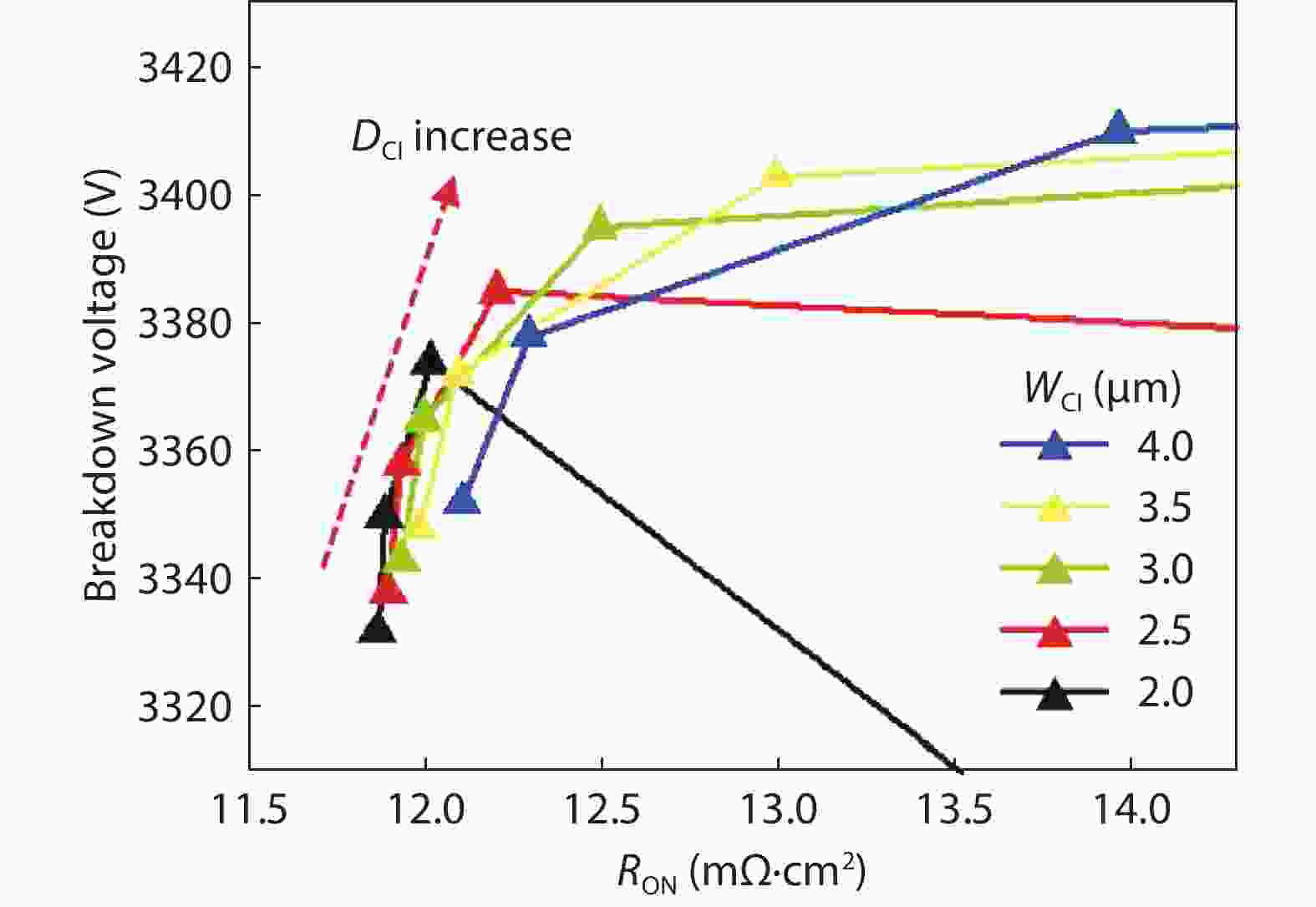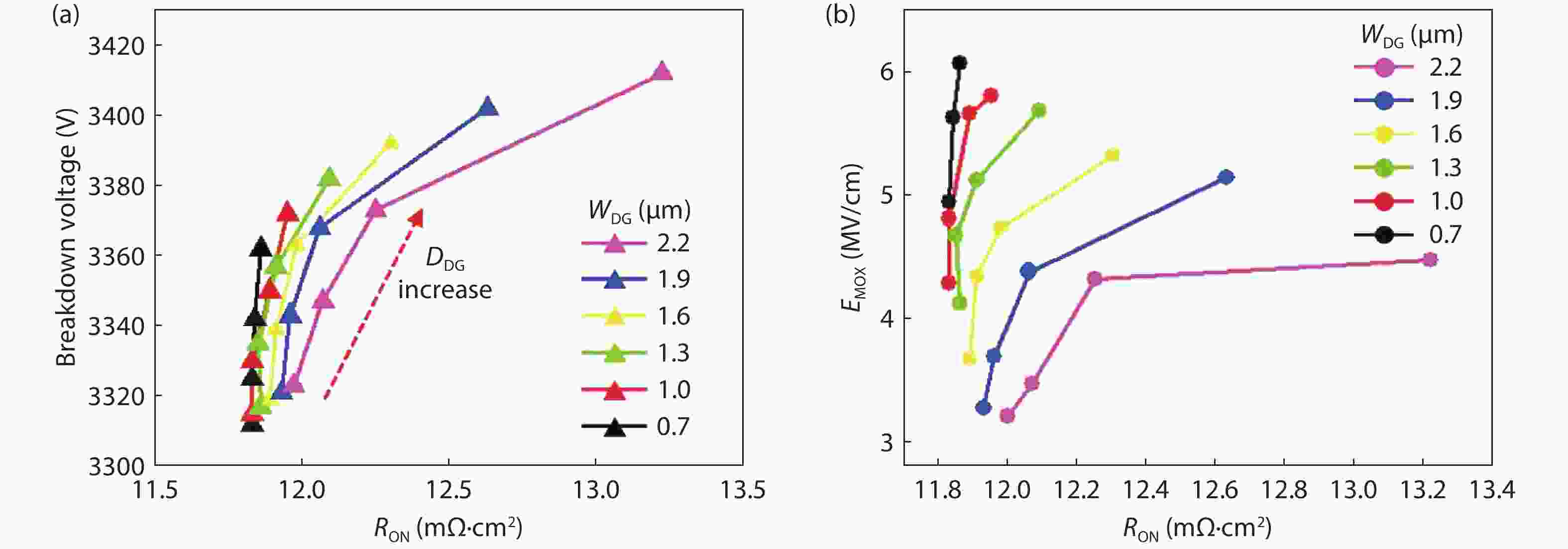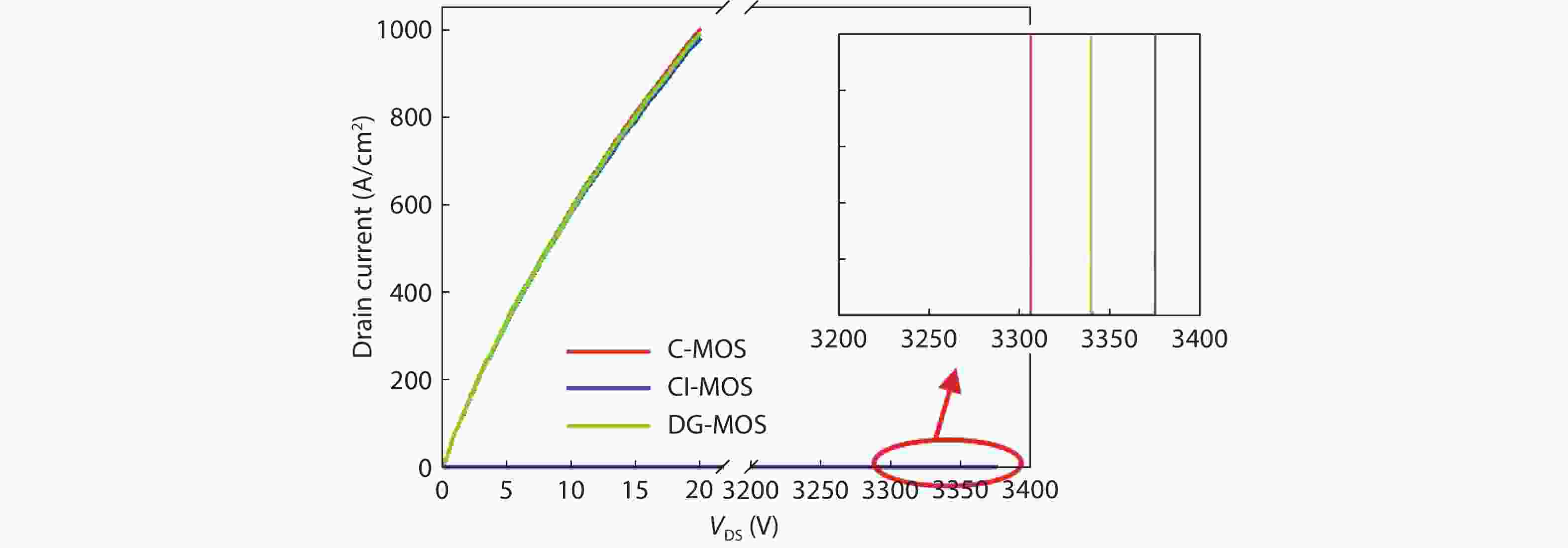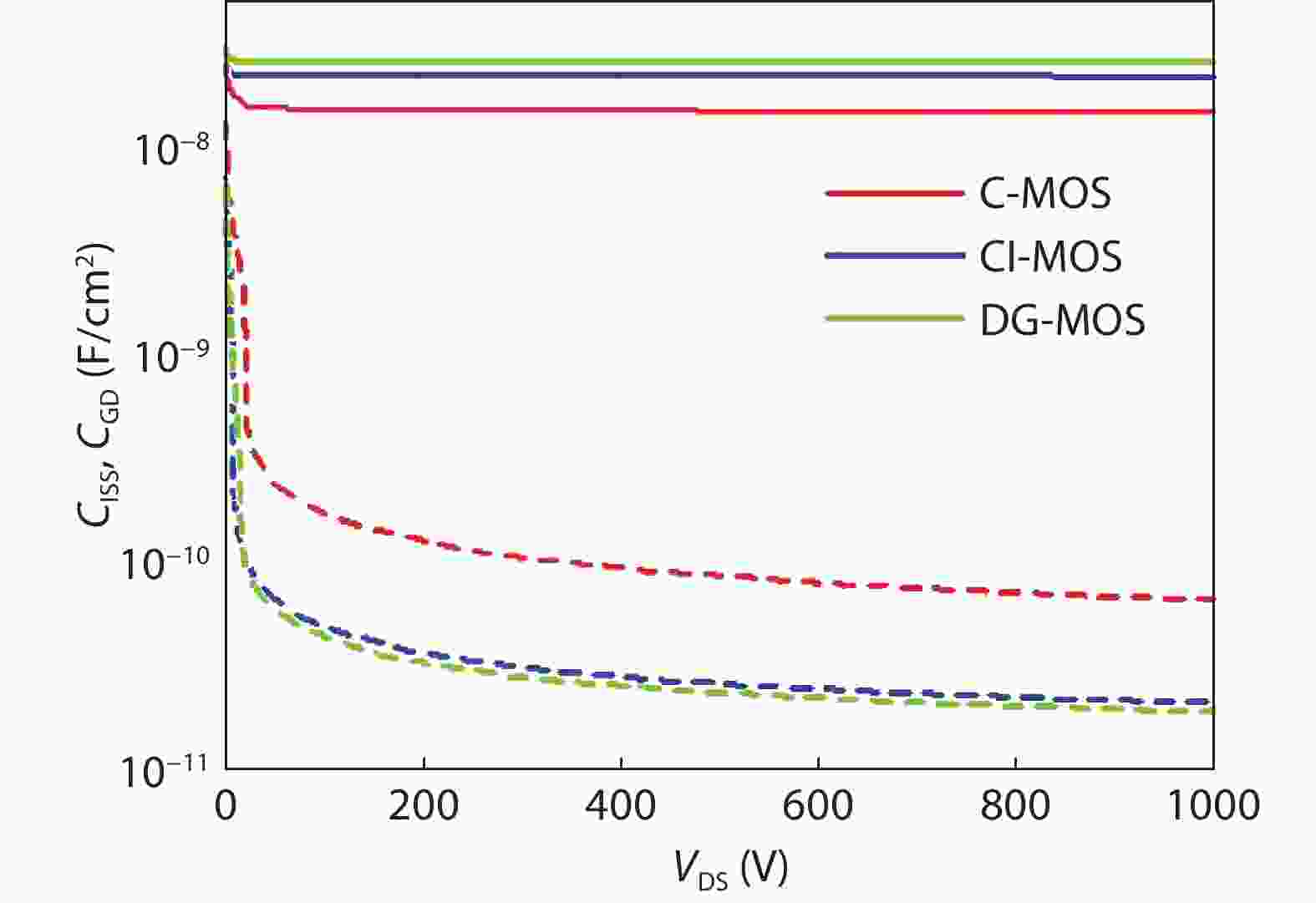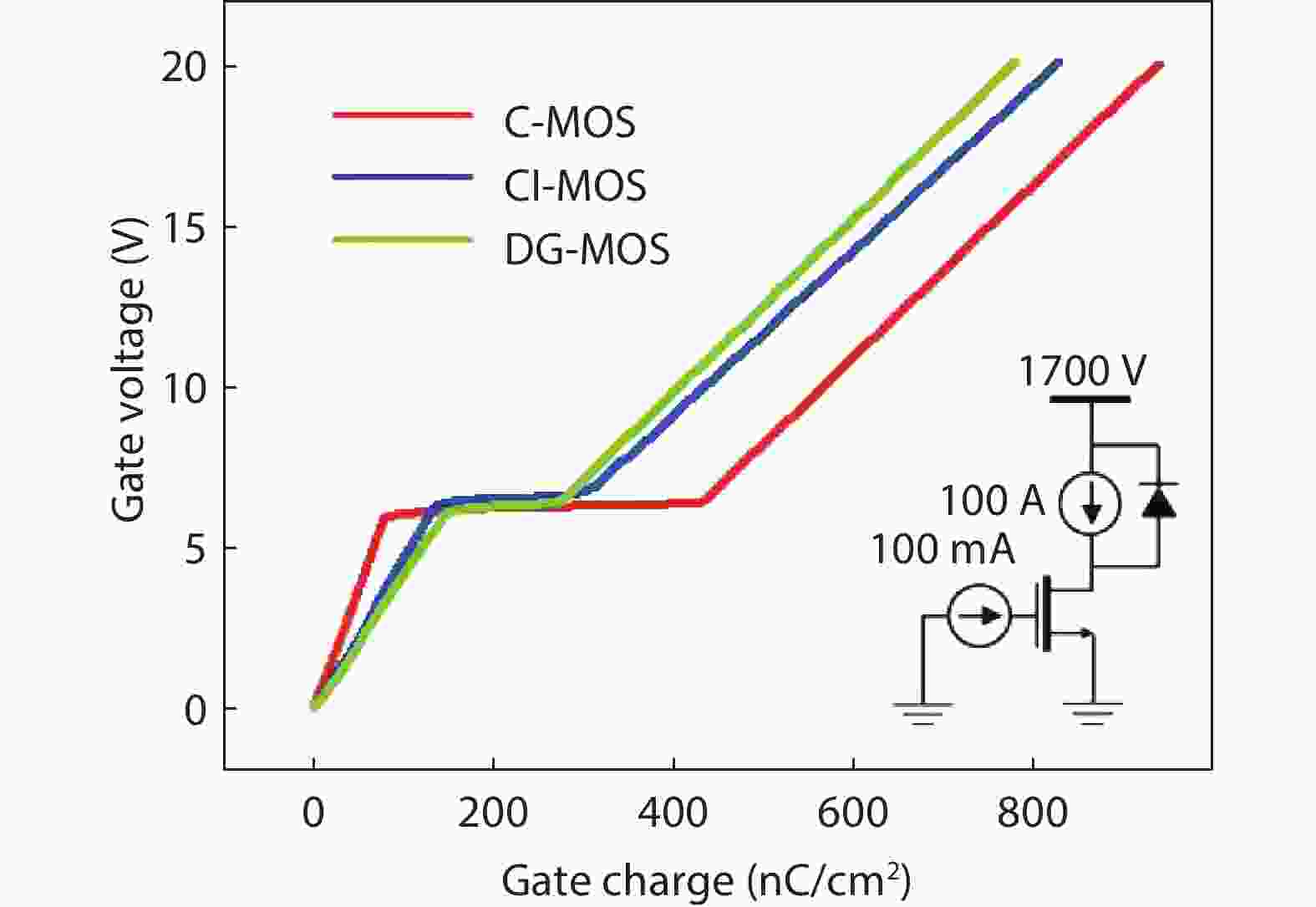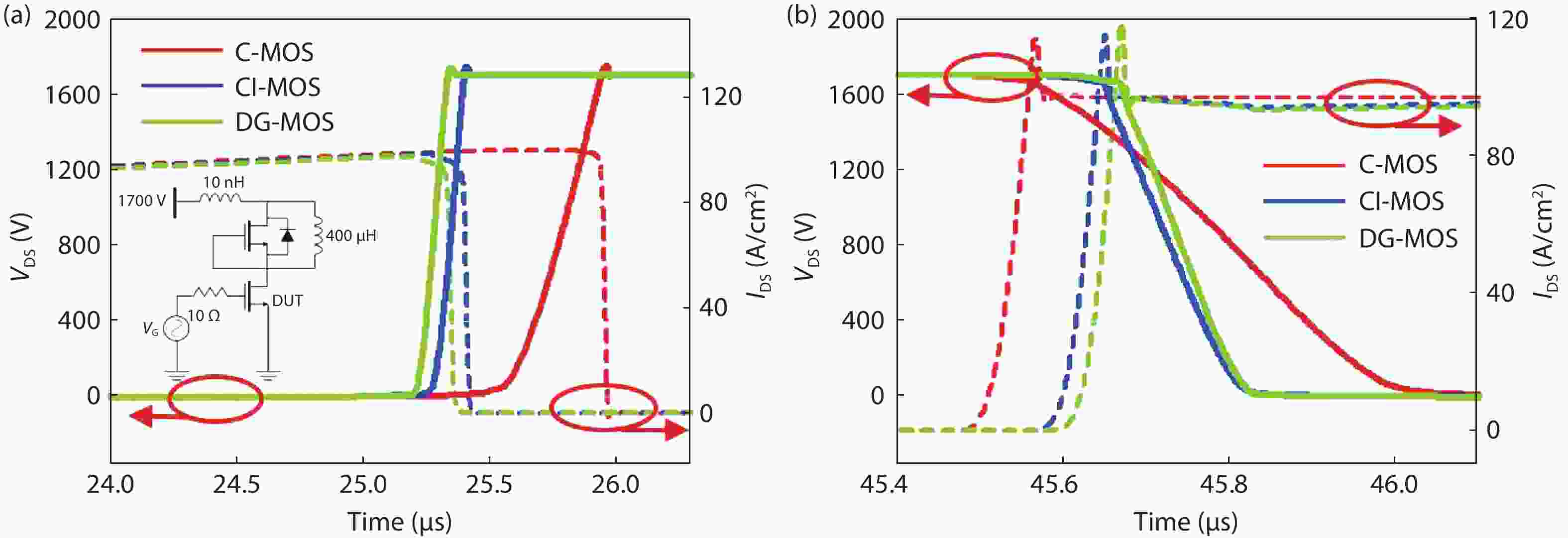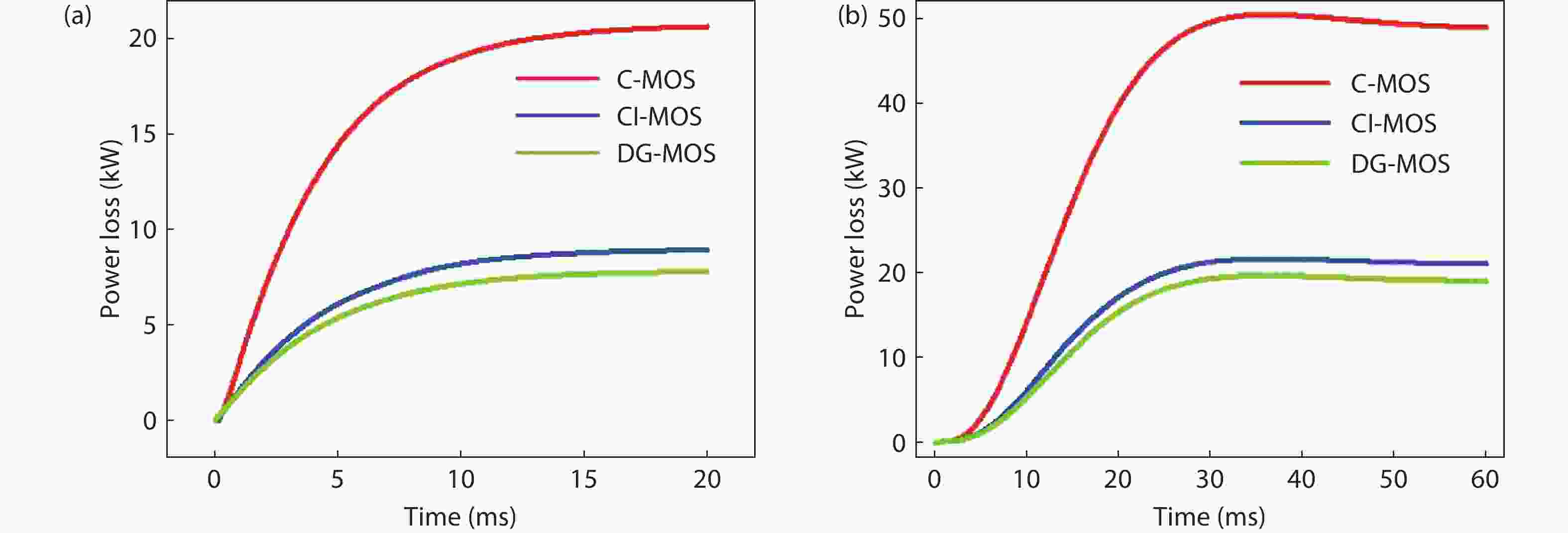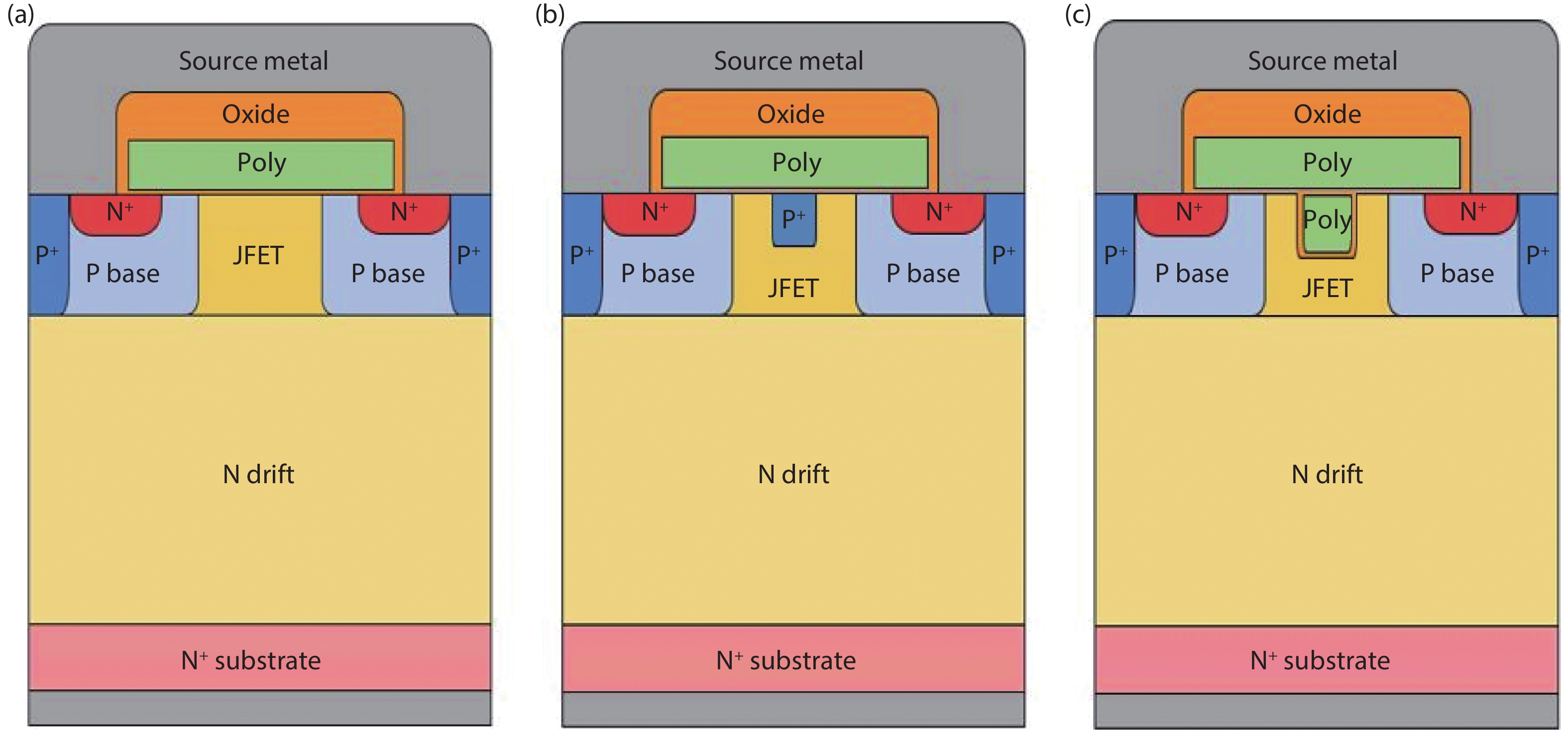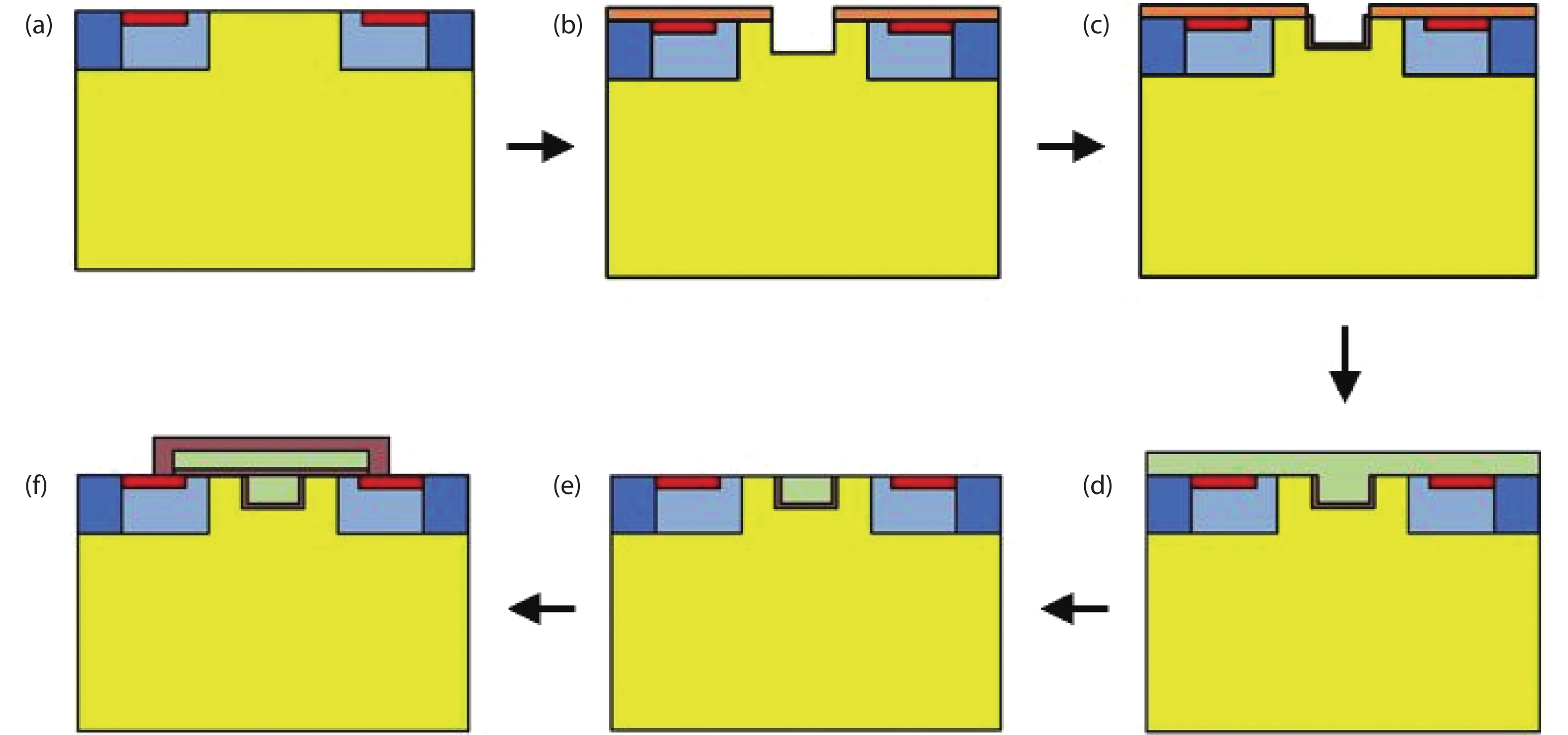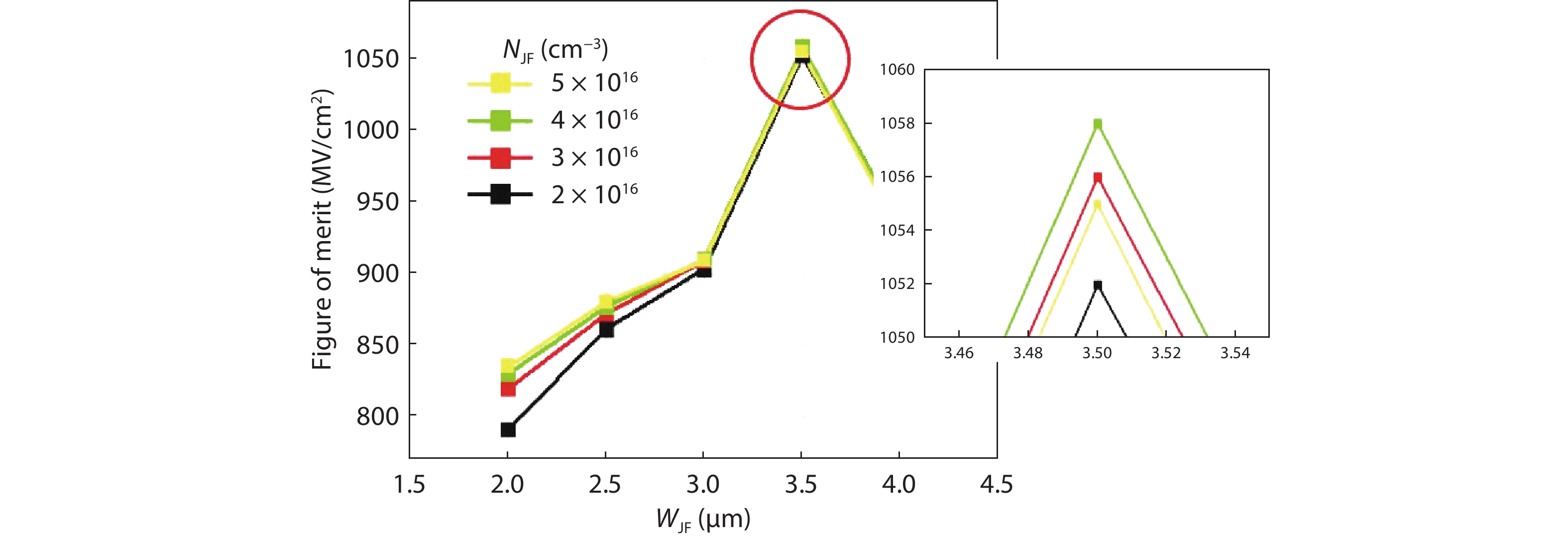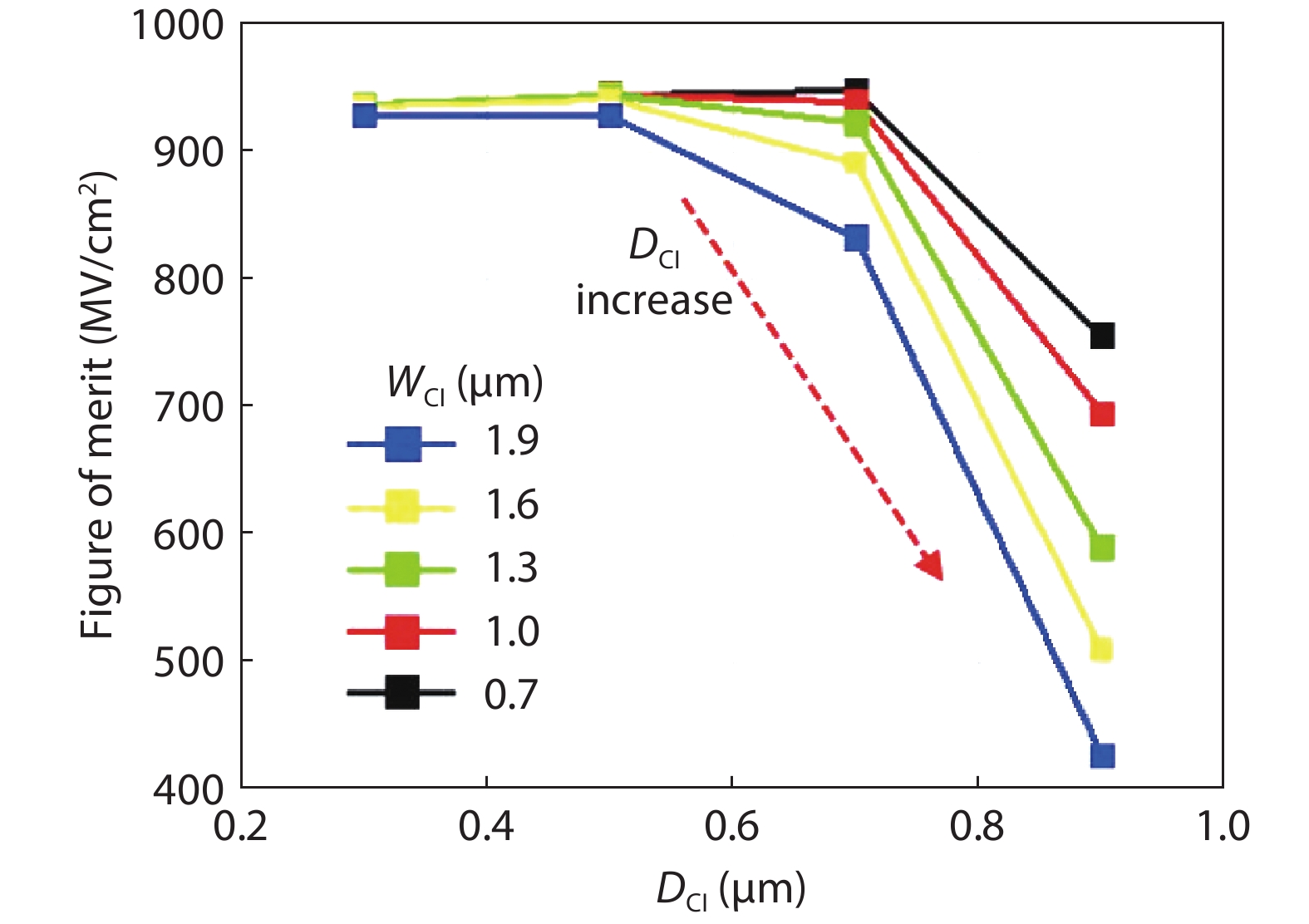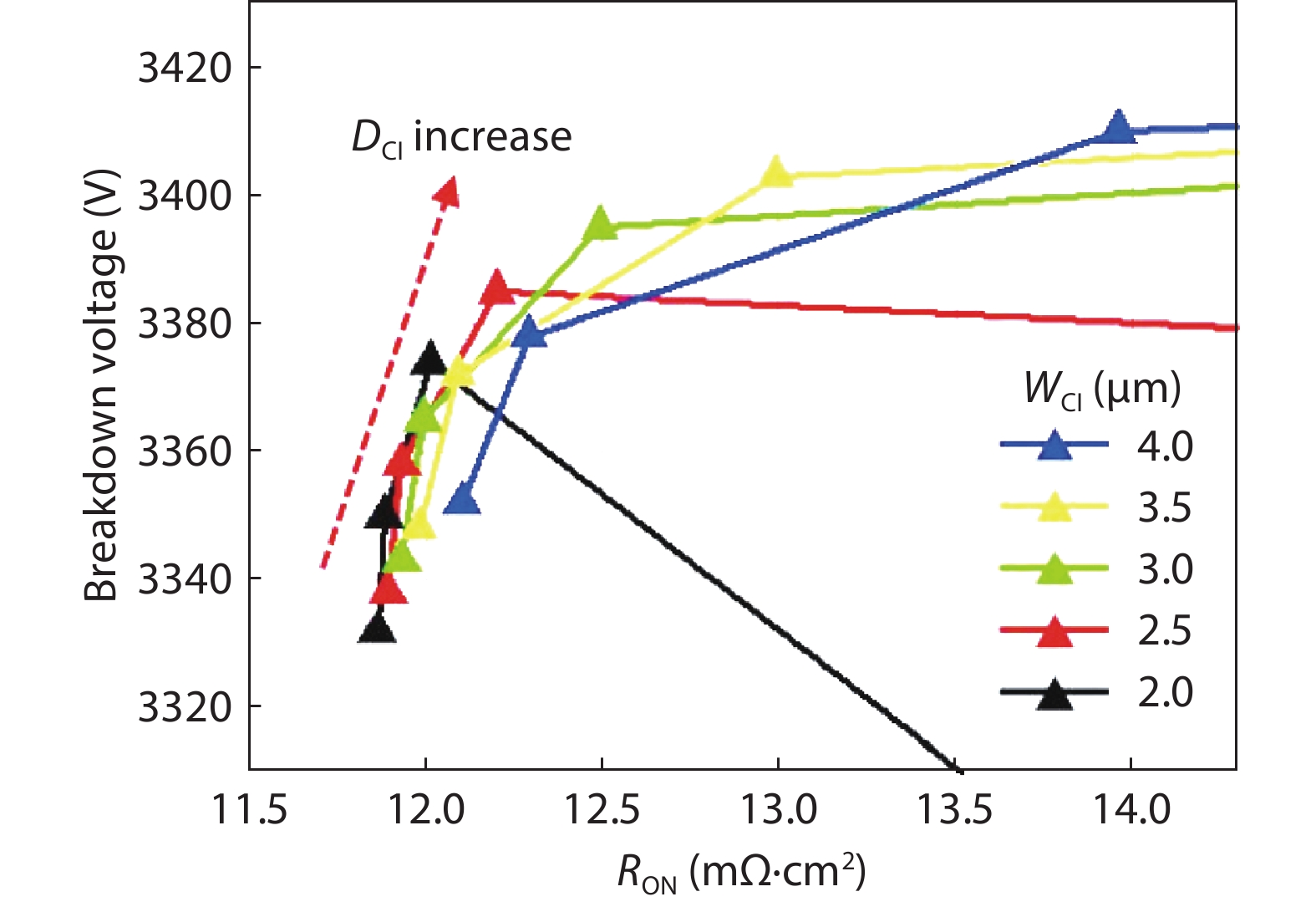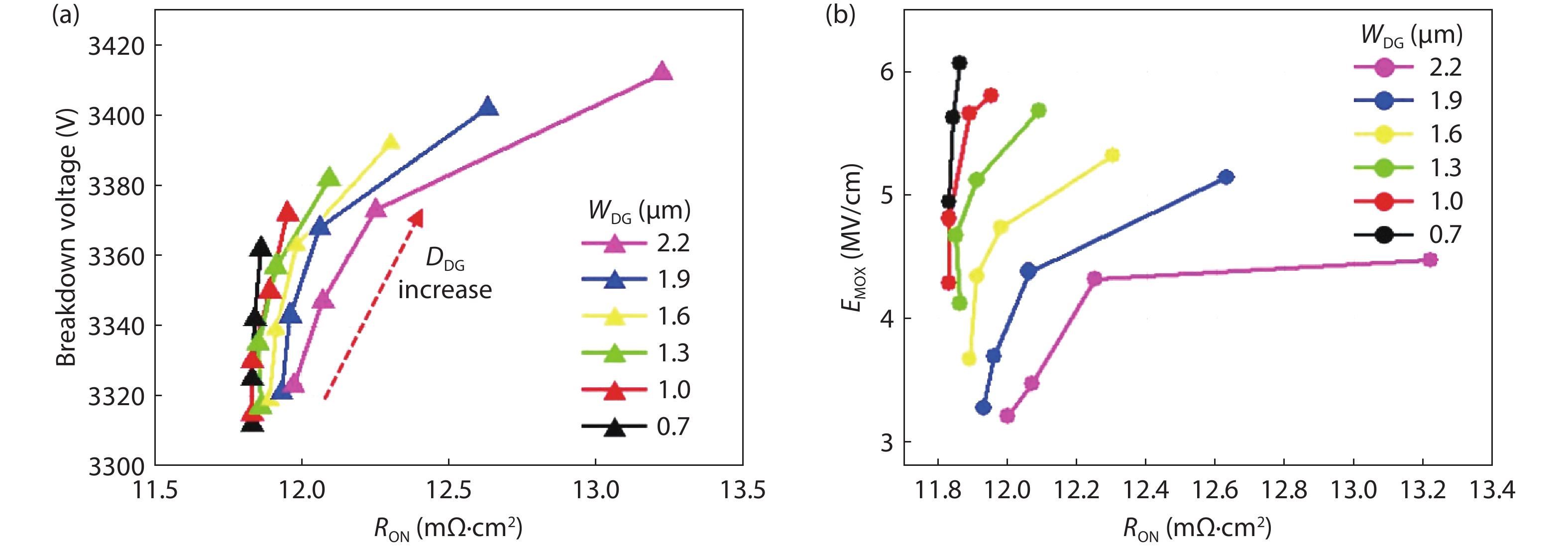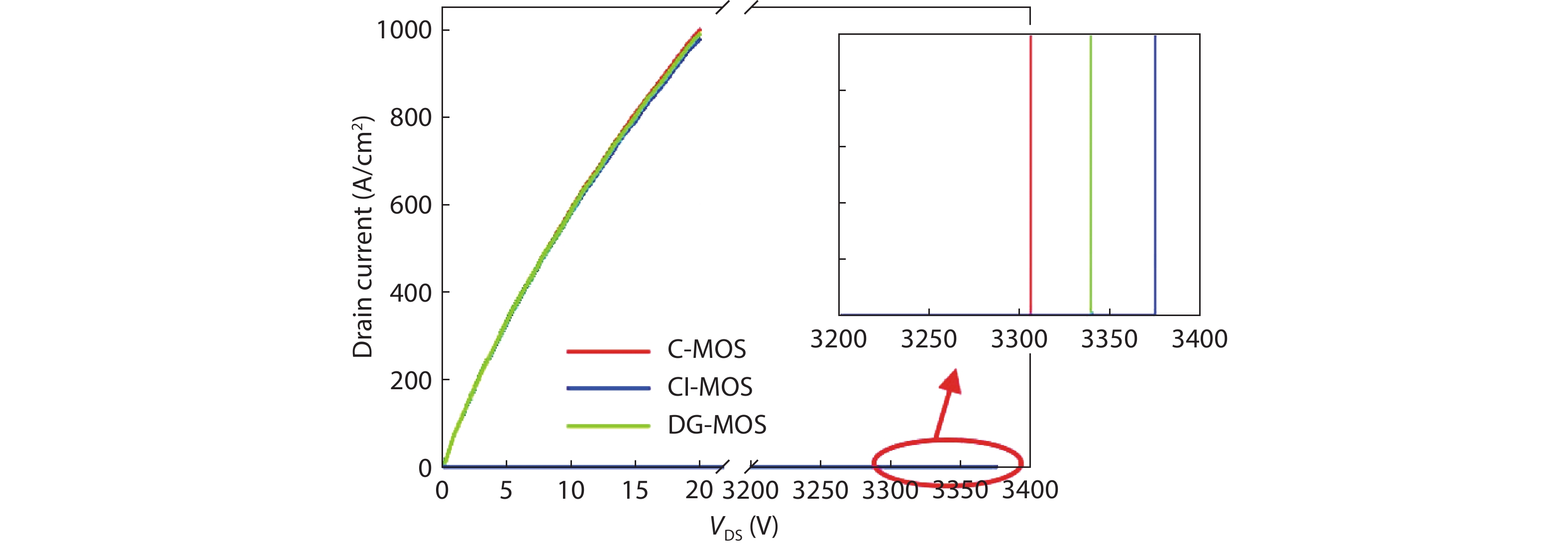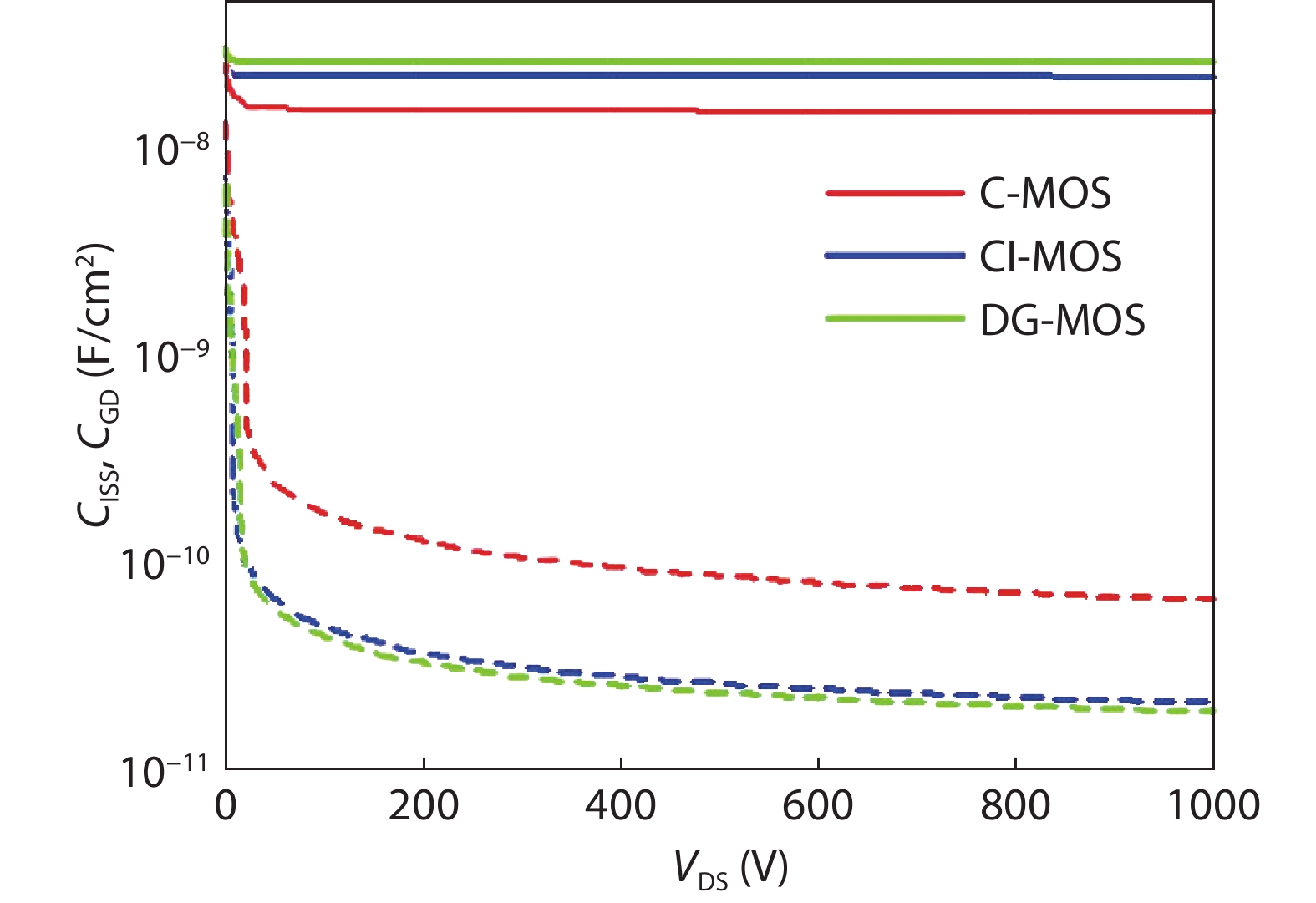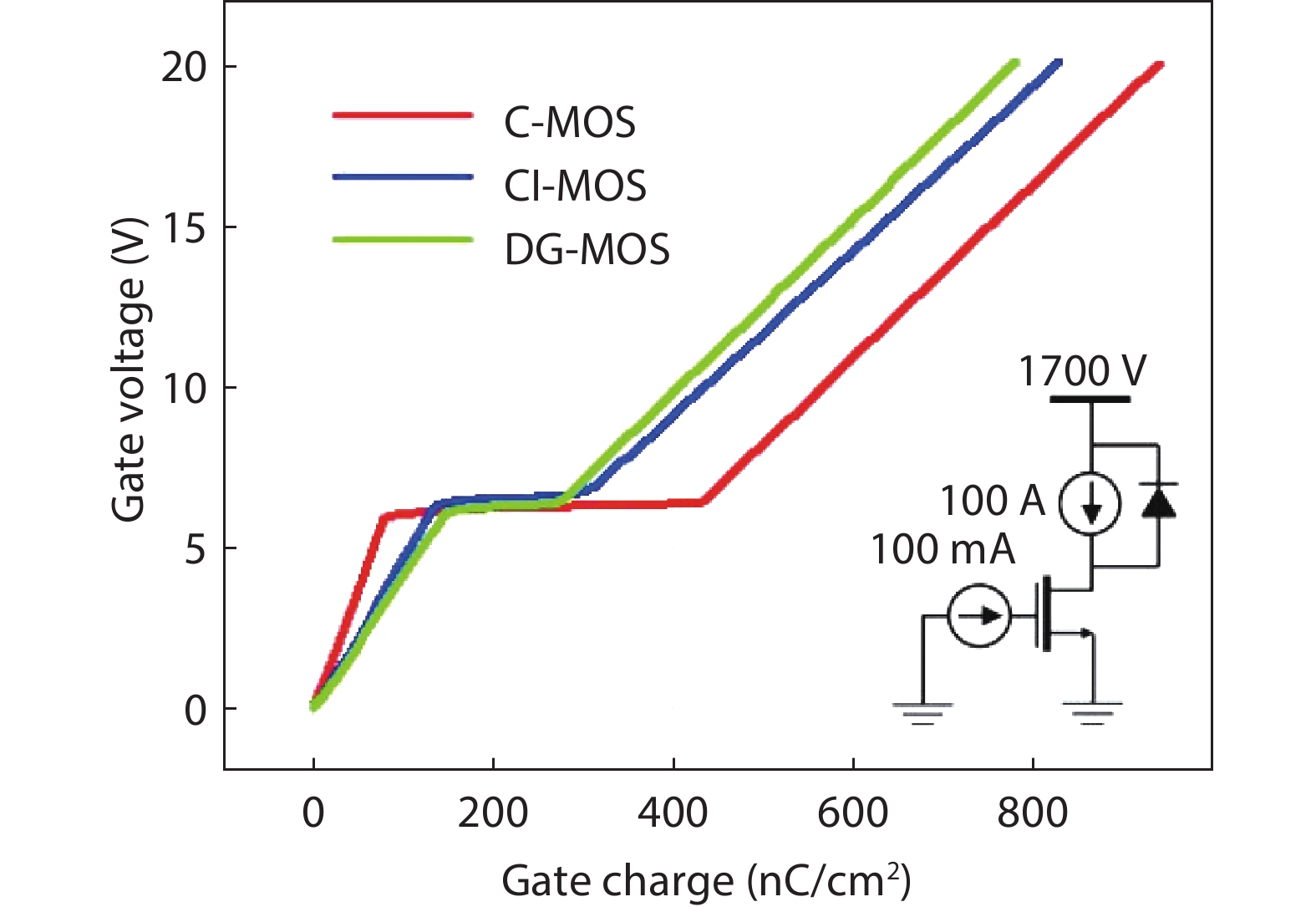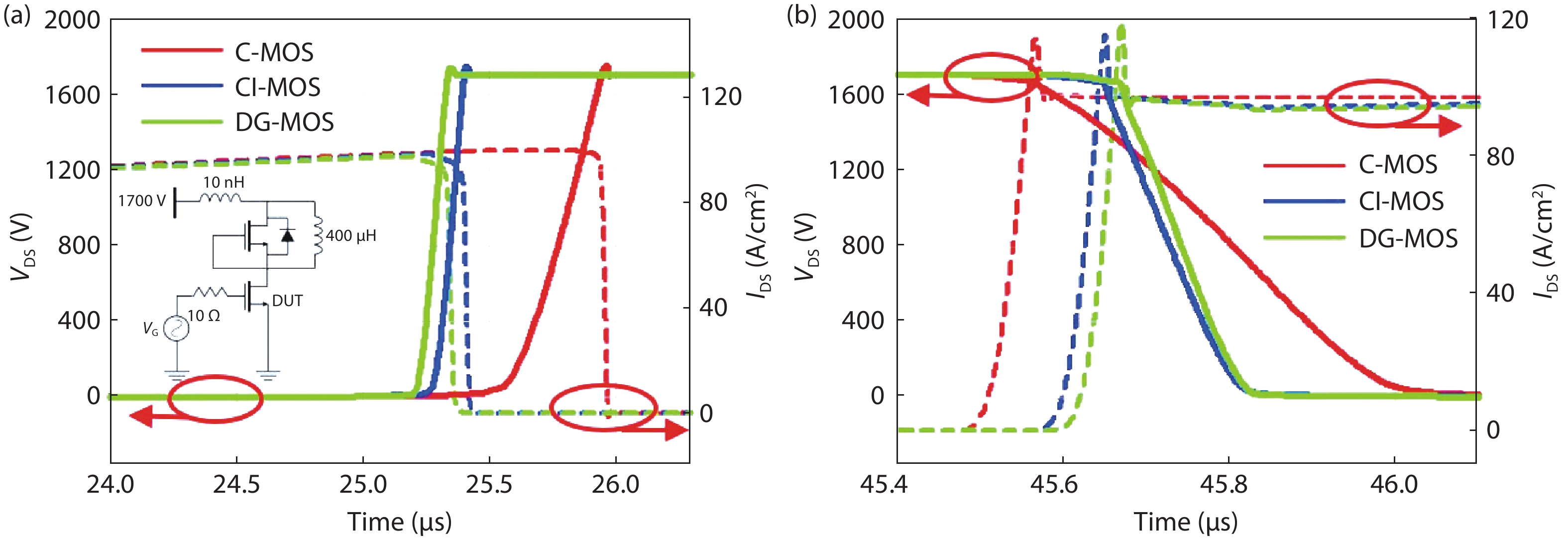| Citation: |
Kyuhyun Cha, Kwangsoo Kim. 3.3 kV 4H-SiC DMOSFET with a source-contacted dummy gate for high-frequency applications[J]. Journal of Semiconductors, 2021, 42(6): 062801. doi: 10.1088/1674-4926/42/6/062801
K Cha, K Kim, 3.3 kV 4H-SiC DMOSFET with a source-contacted dummy gate for high-frequency applications[J]. J. Semicond., 2021, 42(6): 062801. doi: 10.1088/1674-4926/42/6/062801.
Export: BibTex EndNote
|
3.3 kV 4H-SiC DMOSFET with a source-contacted dummy gate for high-frequency applications
doi: 10.1088/1674-4926/42/6/062801
More Information-
Abstract
In this paper, a 4H-SiC DMOSFET with a source-contacted dummy gate (DG-MOSFET) is proposed and analyzed through Sentaurus TCAD and PSIM simulations. The source-contacted MOS structure forms fewer depletion regions than the PN junction. Therefore, the overlapping region between the gate and the drain can be significantly reduced while limiting RON degradation. As a result, the DG-MOSFET offers an improved high-frequency figure of merit (HF-FOM) over the conventional DMOSFET (C-MOSFET) and central-implant MOSFET (CI-MOSFET). The HF-FOM (RON×QGD) of the DG-MOSFET was improved by 59.2% and 22.2% compared with those of the C-MOSFET and CI-MOSFET, respectively. In a double-pulse test, the DG-MOSFET could save total power losses of 53.4% and 5.51%, respectively. Moreover, in a power circuit simulation, the switching power loss was reduced by 61.9% and 12.7% in a buck converter and 61% and 9.6% in a boost converter.-
Keywords:
- 4H-SiC,
- MOSFET,
- dummy-gate,
- gate-drain charge,
- switching loss
-
References
[1] Zhang M, Wei J, Jiang H P, et al. A new SiC trench MOSFET structure with protruded p-base for low oxide field and enhanced switching performance. IEEE Trans Device Mater Relib, 2017, 17, 432 doi: 10.1109/TDMR.2017.2694220[2] Cooper J A, Agarwal A. SiC power-switching devices-the second electronics revolution. Proc IEEE, 2002, 90, 956 doi: 10.1109/JPROC.2002.1021561[3] Du Y, Baek S, Bhattacharya S, et al. High-voltage high-frequency transformer design for a 7.2 kV to 120 V/240 V 20 kVA solid state transformer. IECON 2010 – 36th Annual Conference on IEEE Industrial Electronics Society, 2010, 493[4] Ozdemir S, Acar F, Selamoigullari U. Comparison of silicon carbide MOSFET and IGBT based electric vehicle traction inverters. 2015 International Conference on Electrical Engineering and Informatics (ICEEI), 2015, 1[5] Yano H, Nakao H, Hatayama T, et al. Increased channel mobility in 4H-SiC UMOSFETs using on-axis substrates. Mater Sci Forum, 2007, 556/557, 807 doi: 10.4028/www.scientific.net/MSF.556-557.807[6] Banzhaf C T, Grieb M, Trautmann A, et al. Characterization of diverse gate oxides on 4H-SiC 3D trench-MOS structures. Mater Sci Forum, 2013, 740–742, 691 doi: 10.4028/www.scientific.net/MSF.740-742.691[7] Agarwal A K, Siergiej R R, Seshadri S, et al. A critical look at the performance advantages and limitations of 4H-SiC power UMOSFET structures. 8th International Symposium on Power Semiconductor Devices and ICs (ISPSD), 1997, 70(20), 2732[8] T. C. A. C Synopsys Sentaurus Device Manual Synopsys, Inc., (Version O-2018.06). Mountail View, CA, USA[9] Zhang Q C J, Duc J, Hull B, et al. CIMOSFET: A new MOSFET on SiC with a superior Ron·Qgd figure of merit. Mater Sci Forum, 2015, 821–823, 765 doi: 10.4028/www.scientific.net/MSF.821-823.765[10] Jiang J Y, Wu T L, Zhao F, et al. Numerical study of 4H-SiC UMOSFETs with split-gate and P+ shielding. Energies, 2020, 13, 1122 doi: 10.3390/en13051122[11] Lombardi C, Manzini S, Saporito A, et al. A physically based mobility model for numerical simulation of nonplanar devices. IEEE Trans Comput-Aided Des Integr Circuits Syst, 1988, 7, 1164 doi: 10.1109/43.9186[12] Hatakeyama T, Nishio T, Ota C, et al. Physical modeling and scaling properties of 4H-SiC power devices. International Congerence on Simulation of Semiconductor Processed and Devices, 2005, 171[13] Zhao Y, Niwa H, Kimoto T. Impact ionization coefficients of 4H-SiC in a wide temperature range. Jpn J Appl Phys, 2019, 58, 018001 doi: 10.7567/1347-4065/aae985[14] Vudumula P, Kotamraju S. Design and optimization of 1.2-kV SiC planar inversion MOSFET using split dummy gate concept for high-frequency applications. IEEE Trans Electron Devices, 2019, 66, 5266 doi: 10.1109/TED.2019.2949459[15] Jiang J Y, Huang C F, Wu T L, et al. Simulation study of 4h-SiC trench MOSFETs with various gate structures. Electron Devices Technology and Manufacturing Conference (EDTM), 2019, 401[16] Sui Y, Tsuji T, Cooper J A. On-state characteristics of SiC power UMOSFETs on 115-μm drift layers. IEEE Electron Device Lett, 2005, 26, 255 doi: 10.1109/LED.2005.845495[17] Šimonka V, Hössinger A, Weinbub J, et al. Growth rates of dry thermal oxidation of 4H-silicon carbide. J Appl Phys, 2016, 120, 135705 doi: 10.1063/1.4964688[18] Singh R, Hefner A R. Reliability of SiC MOS devices. Solid-State Electron, 2004, 48, 1717 doi: 10.1016/j.sse.2004.05.005[19] Han K, Baliga B J, Sung W. A novel 1.2 kV 4H-SiC buffered-gate (BG) MOSFET: Analysis and experimental results. IEEE Electron Device Lett, 2018, 39, 248 doi: 10.1109/LED.2017.2785771[20] Baliga B J. Fundamentals of power semiconductor devices. Boston, MA: Springer, 2008[21] Wei J, Zhang M, Jiang H P, et al. Dynamic degradation in SiC trench MOSFET with a floating p-shield revealed with numerical simulations. IEEE Trans Electron Devices, 2017, 64, 2592 doi: 10.1109/TED.2017.2697763[22] Mohan N, Undeland T M, Robbins W P. Power electronics: Converters, applications, and design. John Wiley & Sons, 2003 -
Proportional views






 DownLoad:
DownLoad:
